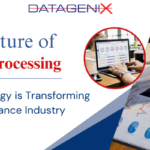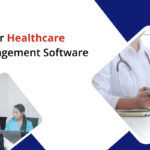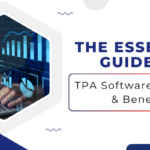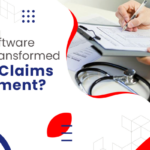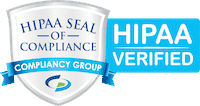Claims Software Systems: The Future of Smart Claims Handling
April 23, 2025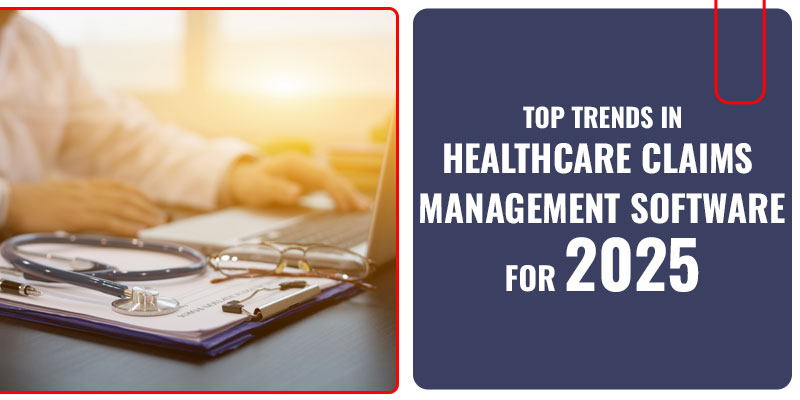
Efficient claims management is essential for the financial health of medical providers and insurers in the dynamic world of healthcare. In 2025, we are witnessing several key trends influencing the future of healthcare claims management software (CMS). Technology improvements, regulatory changes, and the growing need for smoother operations bring about these trends.
This article will examine trends in healthcare claims management software in 2025 encouragingly, emphasizing how it boosts efficiency, prevents errors, and leads to positive health outcomes.
1. AI and Machine Learning Integration
Artificial intelligence (AI) and machine learning (ML) have revolutionized healthcare claims management software, automating many tasks from the first submission of claims to their finalization.
AI and ML have opened up a world of possibilities in claims management. They can now accurately forecast a claim’s results, identify real-time denial-related trends, and even flag potentially fraudulent claims.
Using this type of technology, healthcare providers and insurance companies can considerably lower processing periods and decrease mistakes while making superior choices.
Key Benefits:
- Automated Claims Processing: Automation powered by artificial intelligence is capable of managing regular tasks like registration of data and confirmation, thus taking the burden off human employees
- Fraud Detection: Machine learning algorithms enable the identification of suspicious patterns by scanning generous datasets, thereby aiding in the fight against fraudulent claims.
- Predictive Analytics: AI forecasts whether claims will be successful or might be repudiated, helping providers deal with them upfront.
2. Cloud-Based Solutions
Health claims management should emphasize Cloud computing. There are several benefits, which come with scalability, flexibility, and cost-effectiveness. These promote real-time data interaction among healthcare providers, payers, and patients.
Furthermore, cloud-based systems undoubtedly help integrate diverse healthcare applications, thereby improving interoperability and data exchange.
Key Benefits:
- Scalability: Cloud solutions can easily increase the number of claims they cover without spending much money on improving their infrastructure.
- Accessibility: Remote workers find it easier to work remotely by obtaining claims data regardless of where they are located
- Cost Efficiency: Cloud-based claims management reduces expenses because it doesn’t require hardware or maintenance at the premises.
3. Enhanced Data Security and Privacy
As healthcare data moves increasingly into digital form, people must consider its safety more seriously than ever before.
It is recommended that healthcare claims management software use new security measures, such as cryptography, multi-factors authentication, or blockchain technology, by 2025 to heighten the protection of personal medical records and adherence to confidentiality laws.
Key Benefits:
- Data Encryption: Encrypted data stays safe as it is transmitted or stored. Only approved people can access this information.
- Blockchain Technology: In the medical field, blockchain technology offers a revolutionary solution. It enables the creation of tamper-proof ledgers, enhancing the trustworthiness and reliability of these records.
- Regulatory Compliance: Firms dealing with healthcare issues should have the best safety systems to stop legal and financial penalties.
4. Interoperability and Integration
Healthcare claims paperwork revenue management continues to be centered on interoperability.
Up-to-date Claims Software is meant for seamless incorporation with electronic health records (EHRs), practice management systems, and similar healthcare applications, which make it possible.
As a result, such incorporation leads to easy data transfer, decreasing hand-entry mistakes, thus improving effectiveness.
Key Benefits:
- Seamless Data Exchange: Automatic exchange of patient data from system to system has been made possible through interoperability, thus making the claims process smoother
- Reduced Errors: Integration with EHRs and other systems lessens the incidence of manual data entry, reducing the chances of inaccuracies while increasing precision.
- Improved Collaboration: Improved data exchange between healthcare providers, insurance companies, and other interested parties enhances coordination and patient management.
5. Robust Analytics and Reporting
Health claims management software with advanced analytics and reporting capabilities is increasingly being developed.
Reports say that these tools analyze claims data, thus enabling an organization to recognize opportunities for trends and optimize its operations based on facts.
For example, predictive analytics helps users identify opportunities to reduce future claims and find ways to achieve these reductions.
Key Benefits:
- Data-Driven Insights: Analytics tools allow collected data to be comprehended by organizations and thus support decision-making
- Process Optimization: Organizations may institute betterments and rationalize their undertakings by discovering waste and squeezes in how claims are dealt with
- Predictive Capabilities: Predictive analytics enables firms to prepare for future challenges and opportunities because they can project future claims.
6. Patient-Centric Solutions
The shift towards patient-centric care affects the design of healthcare claims management software.
Current systems emphasize transparent communication channels, simple access to data, and efficient communication channels.
Claims software integration with patient portals and mobile health applications is becoming more popular. This enables patients to monitor their claims, see their status, and contact service providers and insurers.
Key Benefits:
- Transparency: When patients can access data on their claims, it creates transparency and trust.
- Improved Communication: Improved communication between patients, healthcare providers, and insurers will see faster resolution of issues and hence improved satisfaction levels of patients
- Enhanced Engagement: The desire to engage patients with their health care information allows for patient portals and mobile applications.
7. Value-Based Care Models
The change from fee-for-service to value-based care is transforming Healthcare claims management.
Patient outcomes and quality of care are the main concerns of value-based care models. This is in contrast to the quantity of services provided.
In this context, claims management software gradually adapts by including indicators illustrating clients’ performance, results, and satisfaction.
Key Benefits:
- Performance Measurement: The software claims it is possible to track and report on KPIs related to patient outcomes and quality of care.
- Outcome-Based Reimbursement: Enabling value-based care models supports providers in adjusting their payment models to patient outcomes. This promotes better care.
- Improved Patient Care: When care stations and care encounters center on results and service quality, patients experience improved outcomes and healthcare.
8. Regulatory Compliance and Updates
Healthcare is an industry that has regulations all over the place, which makes compliance almost impossible if not for anything else.
Claims management software with enhanced capabilities is being developed by 2025. Such capabilities include automated updates supporting establishment in keeping with perpetual rule changes and monitoring commitments to ensure honesty.
Hence, reports are provided while keeping local, regional, and national requirements up-to-date.
Key Benefits:
- Automated Updates: When software updates automatically to adhere to new policies, the pressure on healthcare organizations decreases.
- Compliance Monitoring: Organizations that monitor changes in regulations round the clock avoid legal problems and remain legal.
- Comprehensive Reporting: Organizations need the following useful reporting features for regulatory bodies’ compliance purposes and report writing.
9. Self-Service Portals
Self-service portals are increasingly widespread in healthcare claims administration.
This enables providers’ and patients’ autonomy in claims management, reducing administrative intervention in claims.
Providers can now submit a claim and check to see if it has been paid. They can also solve problems over the Internet, trace their claims, and communicate with insurance firms.
Key Benefits:
- Increased Efficiency: Allowing providers and patients to manage their claims independently reduces the administrative burden on staff.
- Enhanced Transparency: The transparency and trust ratio between providers and patients is guaranteed. The results of any transaction are available to both of them.
- Faster Resolution: These platforms allow for quick tracking of all issues, leading to speedy claim processing and payment within a short periods of time.
10. Personalized Patient Experiences
Healthcare claims management is now characterized by personalization. Data analytics and AI are used in claims systems to offer tailored patient care, such as customized portals, personal communication, and proactive claim status notifications/alerts.
Key Benefits:
- Tailored Communication: Personalized communication improves patient engagement and satisfaction by appeasing individual needs and preferences.
- Customized Portals: The use of personalized patient portals enhances the user experience and plays a crucial role in improving patient health interactions.
- Proactive Notifications: Appropriate notification timing ensures that patients are aware of their claims, leading to reduced anxiety and a better patient experience.
Conclusion
Healthcare claims software has progressed rapidly due to technology, regulation modifications, and the transition to patient-focused medical services.
The trends discussed herein signify the healthcare industry’s dedication to improved productivity, precision, and patient contentment. AI and ML integration, cloud-based solutions adoption, enhanced data security, and an interoperability focus will continue to shape the future of healthcare claims management in 2025.
If healthcare providers and insurance companies accept this direction, they can improve their services, thus cutting costs and providing good health care to patients.
How Health Claims Management Software Transforming The Industry?
February 7, 2025How Claims Software Can Transform Your Claims Process?
January 29, 2025The Need For Healthcare Claims Management Software
January 13, 2025Reasons You Should Invest in Claims Management Software
January 7, 2025The Essential Guide To TPA Software Features & Benefits
December 24, 2024Claims Management Software: Key To Streamlining Your Business
December 18, 2024How TPA Software Solutions Transformed Medical Claims Management?
November 20, 2024

